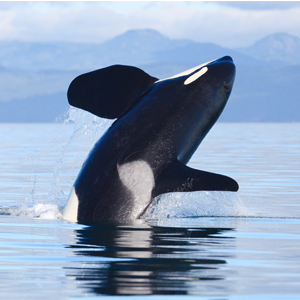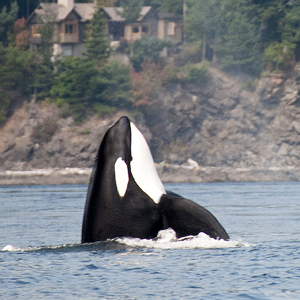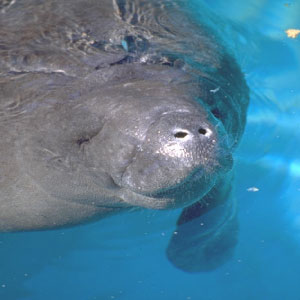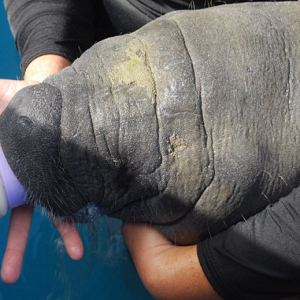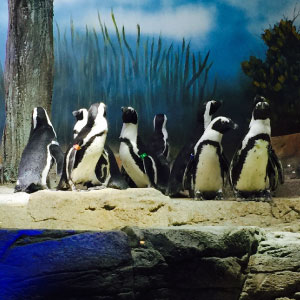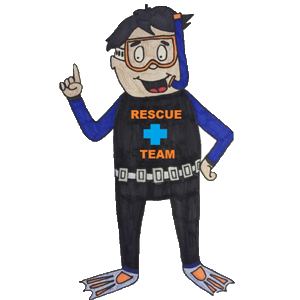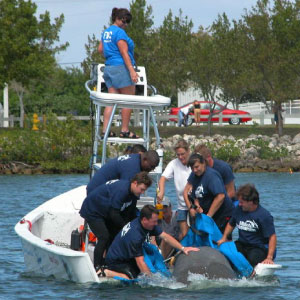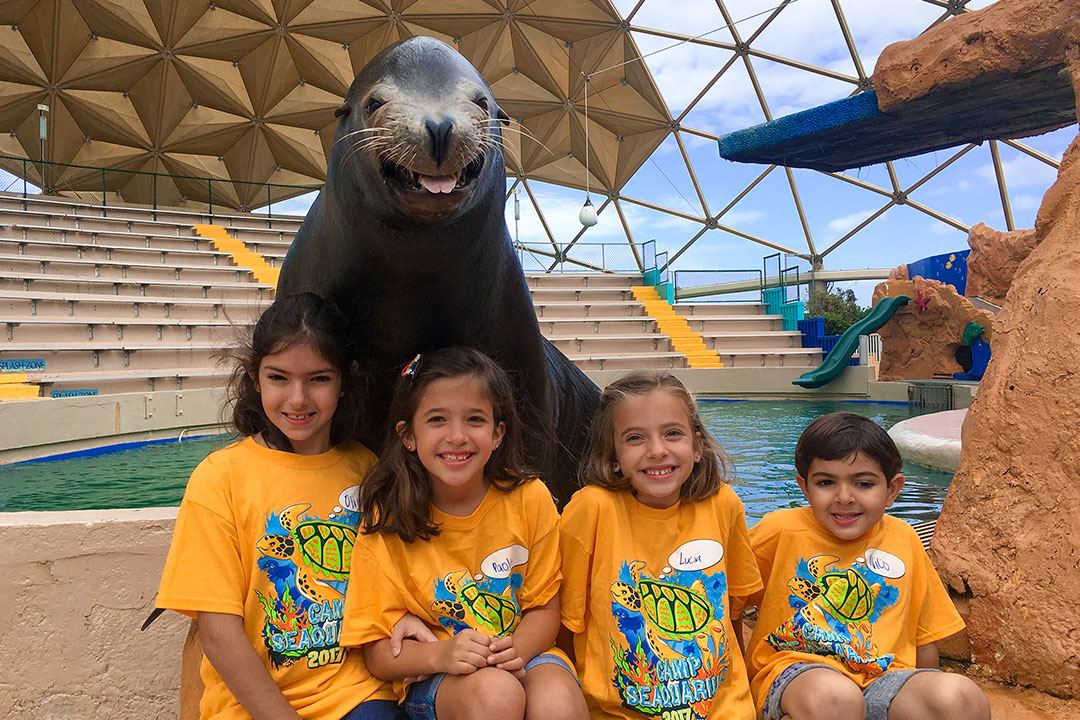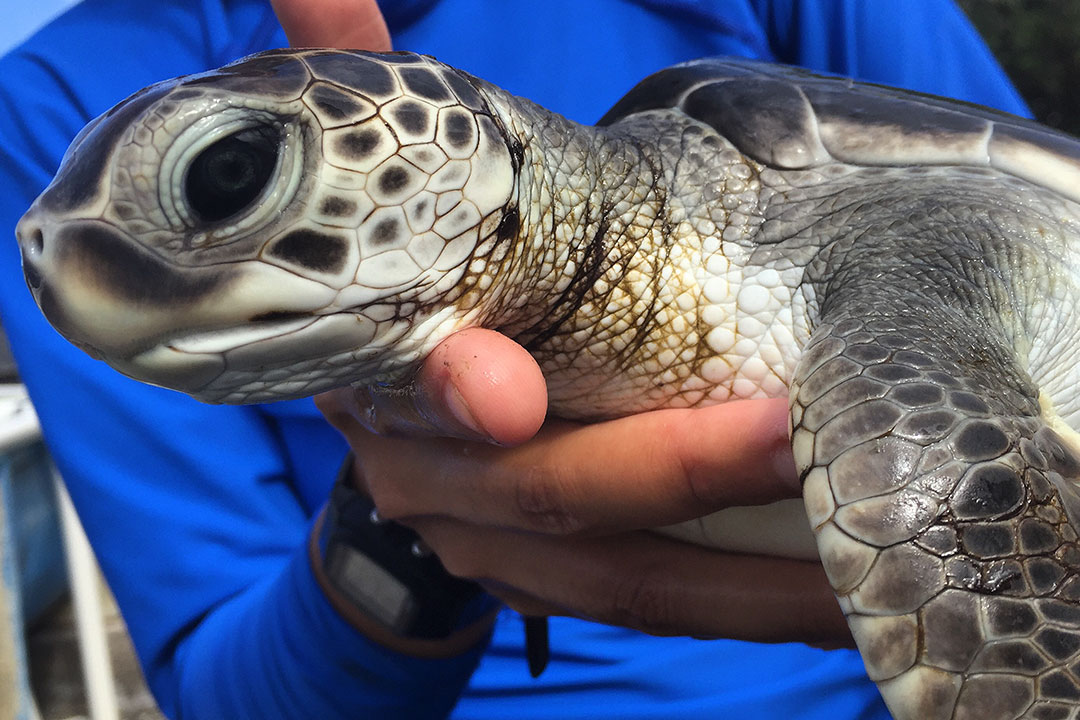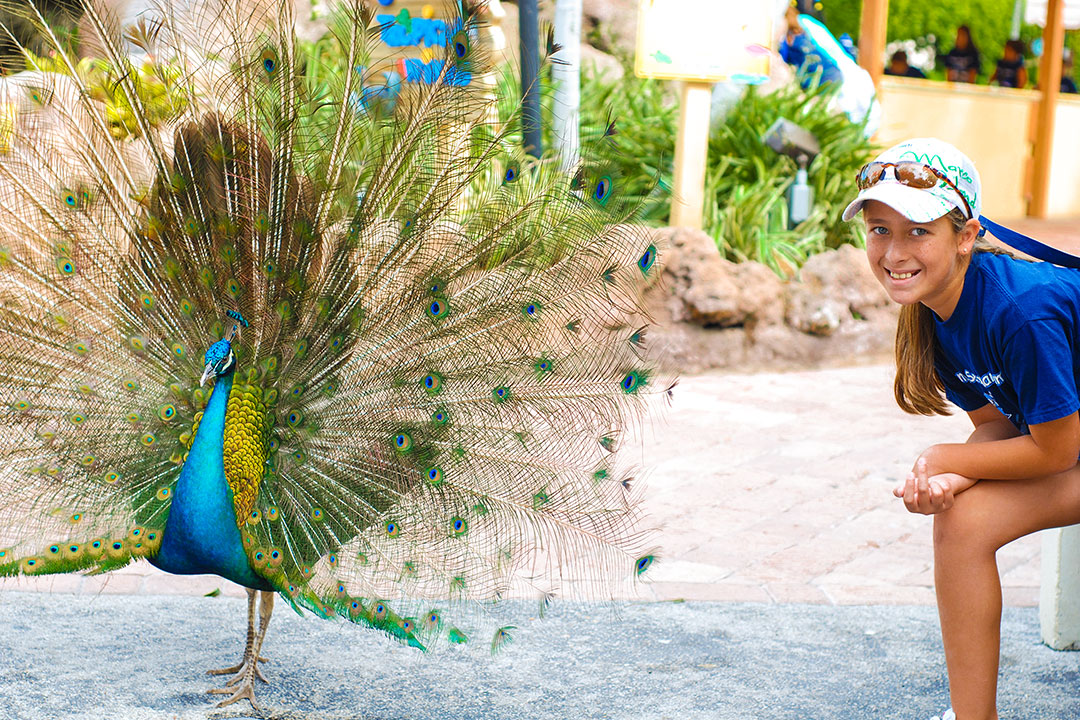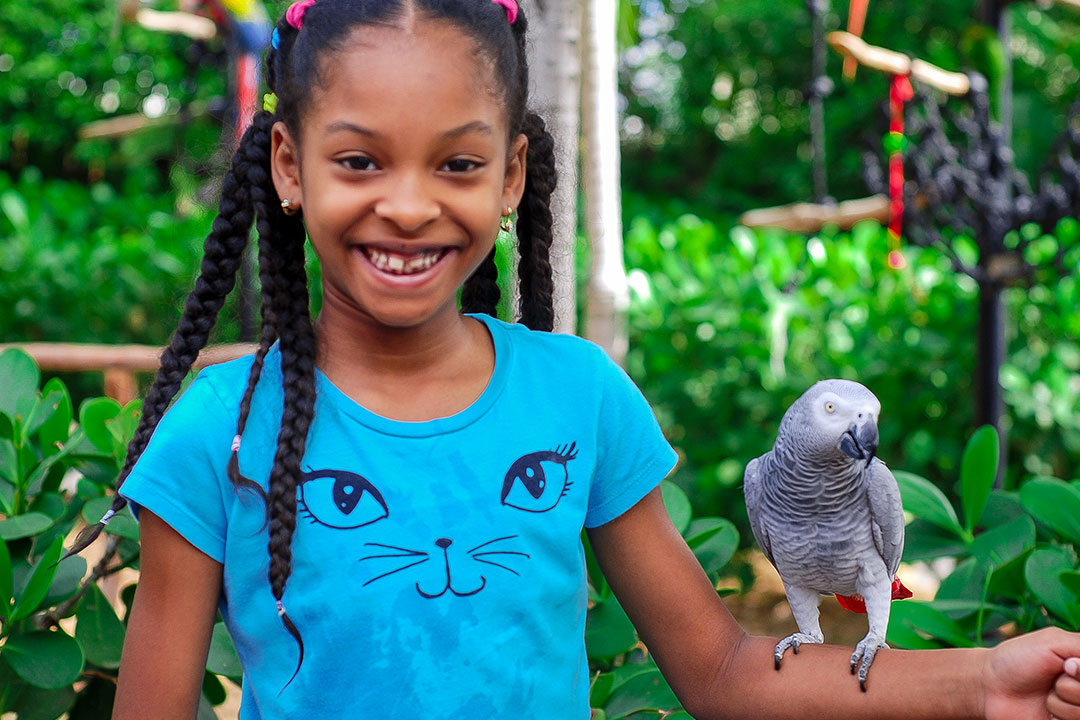
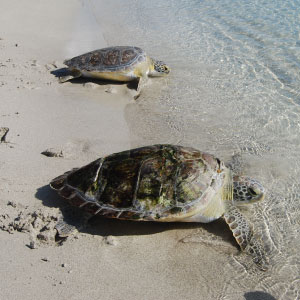
What does a sea turtle do on its birthday? IT SHELLEBRATES.
What are Sea Turtles?
Sea turtles are reptiles, which means they breathe air through their lungs, lay eggs, have scales, and are cold-blooded. Cold-blooded, or ectothermic animals, rely on their environment to regulate their body temperature.
What Do Sea Turtles Eat?
Most sea turtles are omnivores, except adult Green sea turtles, which are herbivores. They eat a variety of different foods from sea grass to crabs to squid. Different species have different tastes, for example; Hawksbill sea turtles mostly eat sea sponges, whereas Leatherback Sea turtles usually only dine on jellyfish.
How Many Kinds of Sea Turtles Are There?
There are 7 species of sea turtles. Here in Florida we see 5 of those species; Loggerhead, Leatherback, Kemp’s Ridley, Green, and Hawksbill Sea Turtles. The Kemp’s Ridley sea turtle is the smallest at about 2-3 feet long and 100 pounds. The largest sea turtle is the Leatherback which can reach 6-7 feet and 1,500 pounds!
Are Sea Turtles Social Animals?
Sea turtles are solitary animals, spending most of their day eating and resting. Sea turtles migrate thousands of miles during their adult lives in search of food and mates. There are many theories as to how sea turtles navigate the ocean to find their way back to the beach they were hatched on. One of the most recent theories is that sea turtles use the Earth’s magnetic pull to find their way around.
Sea Turtle Life Cycle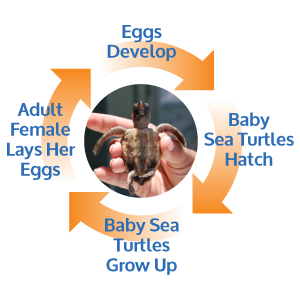
The Eggs Develop
Sea Turtle eggs take about 60 days to develop. A sea turtle’s gender is determined by the temperature of the nest. If the nest is above 86ºF the eggs will become females and if it is below 82.4ºF they will become males. If the temperature is between 82-86 ºF the genders will be a mix of both.
Baby Sea Turtles Hatch
Baby sea turtles emerge from their nests all by themselves. They have a temporary egg-tooth called a caruncle. Located on the tip of their beak, hatchlings use it to break out of the egg shell. It might take a baby sea turtle several days to dig out of their nest. All of the hatchlings usually emerge from the nest at once. They use each other, like a totem pole, to climb to the top of the nest. Once they all break free they follow the brightest horizon to the beach (moonlight) and head out to sea.
Baby Sea Turtles Grow Up
After baby sea turtles find their way to sea, they spend their whole lives traveling the ocean. They grow up and then the female sea turtles return back to the same beach they hatched from to lay their eggs.
An Adult Female Lays Her Eggs
After finding their way back to their preferred beach, mother sea turtles usually climb onto shore at night to lay their eggs. They dig a pit in the sand with their flippers, lay the eggs, and then cover the eggs back up with sand to try and avoid signs that the nest is there. Sea turtle eggs are leathery so they don’t break when they fall into the nest! 2-3 eggs will drop at a time. Each nest has about 80-120 eggs!
Sea Turtle Anatomy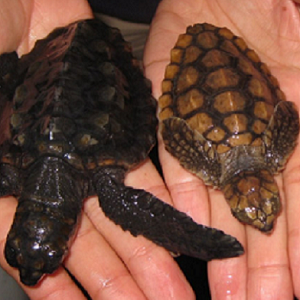
Sea turtles spend almost their entire life in the ocean. They only come to land if they have just hatched, are laying eggs, or if they are sick. Since they are always swimming, they have traits that make them very different from land turtles and help them thrive in the ocean.
They have 4 flipper-like legs that help them swim. Their flippers and head are fused to their shell, so they cannot pull them inside to hide, which can make them vulnerable to predators.
Their shells are streamlined to help them swim faster. Most land turtles have rounded shells that help them roll over if they are flipped upside-down.
The top part of a sea turtle’s shell is called a carapace. A Sea turtle’s spine is attached to its carapace. Without its shell intact, a turtle would not survive. The bottom of the shell is called a glastron. Most sea turtle’s shells are bony, but the Leatherback’s carapace is covered by skin and oily flesh.
They must come to the surface to breathe air, but depending on activity level, they can hold their breath for a long time. A relaxed sea turtle can remain under water for about 4-7 hours!!
Sea Turtle mouths are shaped like beaks to help them eat animals such as crabs, sponges, and jellyfish.
Sea turtles have glands called, lachrymal salt gland, under their eyes that excrete the extra salt they ingest. This is why when they come on land it can look as though they are crying.
Threats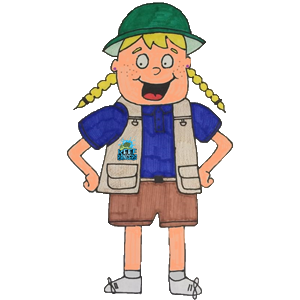
Every species of sea turtle in Florida is endangered! They face many threats out in the wild:
Fishing Gear
Sea turtles often get entangled in nets, long fishing lines, and trapped in fishing gear. Sometimes they are accidently caught as bycatch. When entangled, the turtles can drown and often suffer serious injuries. Trawls should have turtle excluder devices (TEDs), which have a trap door-like structure, allowing the turtles to escape but the fish to stay inside.
Marine Debris & Pollution
Pollution is a huge problem for sea turtles because they are constantly ingesting or becoming entangled in marine debris. Plastic bags are commonly found ingested by Leatherback Sea Turtles, because they look like jellyfish floating in the water. If this happens, it can give the turtle a false sense of being full, get stuck in their stomach or intestines and expose the animal to dangerous toxins.
Sea turtles breathe air with their lungs, so if they are entangled in trash, they might not be able to make it to the surface to breathe. Sea turtles are constantly growing. If marine debris is wrapped around them it can cause deformities or suffocation.
Environmental contamination from coastal runoff, agriculture or aquaculture, construction, dredging, oil, gas, and sewage can have negative effects on the quality of water where sea turtles live. When this water pollution enters the ocean, it can make all marine life sick.
Habitat Degradation
Warming oceans have a potential to impact all aspects of a turtle’s life cycle. From sea level rise, flooding sea turtle nests, to changing how much and where they can find food, it is unknown how badly climate change could affect sea turtles.
Beach development, beach nourishment, and non-native vegetation can take away nesting areas or disrupt the natural, pre-existing beaches female sea turtles need to lay their eggs. This could create increased stress for the mother sea turtle and result in a lower survivorship of her eggs or hatchlings.
In the ocean, human related activities can have negative effects on sea turtle habitats. If they are not careful, boats, anchors, snorkelers, and scuba divers may damage or destroy mangroves, sea grass beds, and coral reefs. These are areas sea turtles need to live and find food.
Boat Strikes
Sea turtles must come to the surface to breathe. When swimming near the surface of the water, sea turtles are vulnerable to boat strikes. Collisions with boats can result in serious propeller injuries and death.
Sometimes, when sea turtles are hit by boats, they are left with a permanent air bubble under their shells. An air bubble causes them to constantly float, as if they are wearing a life vest. Unable to swim properly, the sea turtles are then more vulnerable to predators, boats, and malnutrition.
Beach Activity
People visiting beaches can disrupt unmarked sea turtle nests. These nests can be crushed by heavy objects or vehicles on the beach. Beach toys, chairs, big holes, or sand castles on the beach left behind accidently can become obstacles for hatchlings trying to make their way to the ocean.
Artificial Lighting
In order to find their way to the ocean, sea turtle hatchlings follow the light of the moon and its reflection on the water. When lights on land are too bright, these hatchlings can become disoriented and go the wrong way. This causes the hatchlings to become more vulnerable to predators or accidents and can make them too tired or dehydrated to find the ocean.
Mother sea turtles are affected by light pollution too. If lights are too bright on land, the mother sea turtle might get discouraged from nesting in that particular spot. If she can’t find a safe place to nest she will deposit her eggs in the ocean and they will not hatch.
Predators
Sea turtles have many natural predators. When they are in the nest, land animals such as mammals, birds, insects, and/or crustaceans may find the eggs and eat them. When they hatch, they hurry to the ocean to avoid these land animals, but still have predators in the sea like fish and birds. When they are full grown, sharks and orca whales may still be a threat.
Some people also hunt sea turtles to make products such as meat or eggs, shells, leather, and oil. This is illegal in most countries, but some countries still allow it or people continue to do it illegally.
How you can help Sea Turtles:
As you can see, there are many human activities that affect sea turtles. In fact, only about 1 in every 1,000 baby sea turtles survives to adulthood! Don’t worry through Rangers; all hope is not lost! There are many things you can do to help sea turtles.
At Home:
- Support organizations that help injured sea turtles. Miami Seaquarium is a state permitted rescue and rehabilitation facility for sea turtles
- Learn about sea turtles and teach others about them. If more people know about sea turtles and the threats they face, more people will want to help them.
- Participate in a beach clean up
- Do not buy products make of sea turtle shells, skin, or meat.
At the Beach:
- Watch nesting turtles by joining one of the many state-permitted turtle walks
- Never approach turtles emerging from the ocean or disturb a nesting turtle. Sea Turtles are protected by State and Federal Laws, so touching sea turtles, disturbing hatchlings, or destroying sea turtle nests is punishable by law.
- When visiting the beach on your own, pick up three pieces of trash that you find that are not your own. You are helping sea turtles as well as several other species of marine life. If everyone that visited the beach did this, imagine how clean our beaches would be!
- If you are staying on the beach for an extended period of time during nesting season, please remove all items from the beach including beach chairs and umbrellas. Items left on the beach make sea turtle’s movements on the beach difficult.
- Destroy all sand castles and fill up holes in the sand when you are ready to leave the beach. Sand castles and holes create obstacles for sea turtle hatchlings trying to get from their nest to the ocean.
- If you live along the coast or are vacationing along the coast, turn off patio lights and close balcony curtains during turtle nesting season,
(March-October along the Atlantic Ocean and May-October along the Gulf of Mexico )
Another way we can help sea turtles is to always reduce, reuse, and recycle! Here’s a nifty idea: how about instead of throwing away your egg cartons… make a sea turtle with them!
Get Crafty Sea Turtle Style


